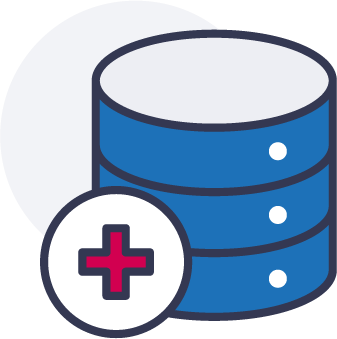A key regulation for the European health data strategy
The European Commission has proposed a draft regulation aimed at establishing a European Health Data Space (EHDS) for:
- Guaranteeing citizens access to their health data;
- Ensuring continuity of care, by allowing healthcare professionals direct access to the health data of patients under their care, with the patient's consent, immediately, under secure conditions, free of charge and in the language of the healthcare professional, whatever European country the patient resides in;
- Creating a common framework at the European level for the re-use of health data for research, innovation and policy-making purposes, with a single request for access, a European data and metadata catalogue, and under secure conditions.
This draft regulation therefore includes : a section on primary use of health data (MyHealth@EU), a section on secondary use of health data (HealthData@EU) and a certification section (single market access for software publishers, digital MDs, and applications).
👉Pour accéder à la version française du site : Cliquez ici
What is a European Data Space?
The concept of a European Data Space is a set of relevant rules, infrastructure, and governance frameworks to facilitate the sharing of data in a sector or area of interest.
The European Health Data Space is :

Secure, privacy-friendly infrastructure for collecting, accessing, sharing, processing, and using data (secure, private EU network, separate from the Internet).

Common interoperability rules for technical, semantic and connectivity purposes.

A clear and practical framework for access to and use of data in a fair, transparent, proportionate, non-discriminatory manner, operating under clear, reliable data governance mechanisms.

Respect for European rules and values: protection of personal data, consumer protection legislation, and competition law.

Financing rules: allowing data to be provided and used either for compensation or free of charge.

The participation of a broad number of organisations/individuals.
Specific focus on 3 sections
-
Primary use of health data (care)

-
Electronic health records (EHRs) and wellness applications

-
Secondary use of health data

For the primary use of health data, this draft regulation applies to all digital services using personal health data, in the health and social care sectors. It provides for:
- In interoperability matters, specifying and making mandatory a syntactic, semantic health data exchange format;
- In security matters, specifying and making mandatory requirements concerning the confidentiality, integrity, security, and protection of electronic health data, as well as specifications for the management and use of electronic identification;
- In compliance matters, designating a Digital Health Authority for each Member State responsible for certifying the compliance of digital health services with the interoperability and security specifications defined at European level.
The draft EHDS regulation makes participation in the MyHealth@EU common infrastructure mandatory in order to supply and receive health data for the purposes of the care pathway, with priority given to Patient Summaries (the European equivalent of synthèses médicales), electronic prescribing and dispensing, hospital discharge letters, medical images and medical imaging reports, and lab test results.
As part of the MyHealth@EU programme, the Agence du Numérique en Santé (ANS) is the national contact for e-health and is working on the development of European use cases.
To this end, the ANS is implementing the Sesali.fr service, which currently enables healthcare professionals to connect and consult the medical summary of a patient from another European Union country. In addition, the ANS is providing an API enabling Sesali to be incorporated into healthcare software to access European patient data.
This section contains a number of provisions concerning EHR systems, including compliance criteria (data involved, semantic coding methods and technical specifications, data confidentiality, integrity, and security requirements, data quality and completeness, contents of the technical documentation and fact sheet), conditional marketing (or entry into service) (fact sheet, technical documentation, EU declaration of conformity, CE marking) and compliance obligations (corrective measures, disclosure, cooperation with market surveillance authorities).
The EHDS regulation provides for the establishment of a market surveillance authority responsible for monitoring the compliance of economic operators (manufacturers, agents, importers, distributors) of EHR systems with the regulation.
The draft regulation establishes a governance framework designed to simplify and harmonise access conditions. This governance framework provides for:
- Rules and a procedure for accessing data that impose deadlines for authorisation and making data available
- The establishment of national data access bodies to make it easy to consult the conditions under which electronic health data is made available for secondary use, with a certain amount of disclosure involved;
- Defining the roles and responsibilities of the players involved;
- Setting up a common decentralised HealthData@EU infrastructure for making data available and usable.
The draft EHDS regulation makes participation in the HealthData@EU infrastructure compulsory. The Health Data Hub (HDH) is coordinating a consortium of 16 partners to create a HealthData@EU pilot. This 2-year project, funded by the European Commission, aims to:
Develop and deploy a network of core services and platforms (nodes) to connect participating countries via their national checkpoints (HDABs, Health Data Access Bodies), as well as certain European bodies such as the ECDC (European Centre for Disease Prevention and Control) and the EMA (European Medicines Agency);
Assess the feasibility and capability of Member States to deploy such infrastructure EU-wide.



















